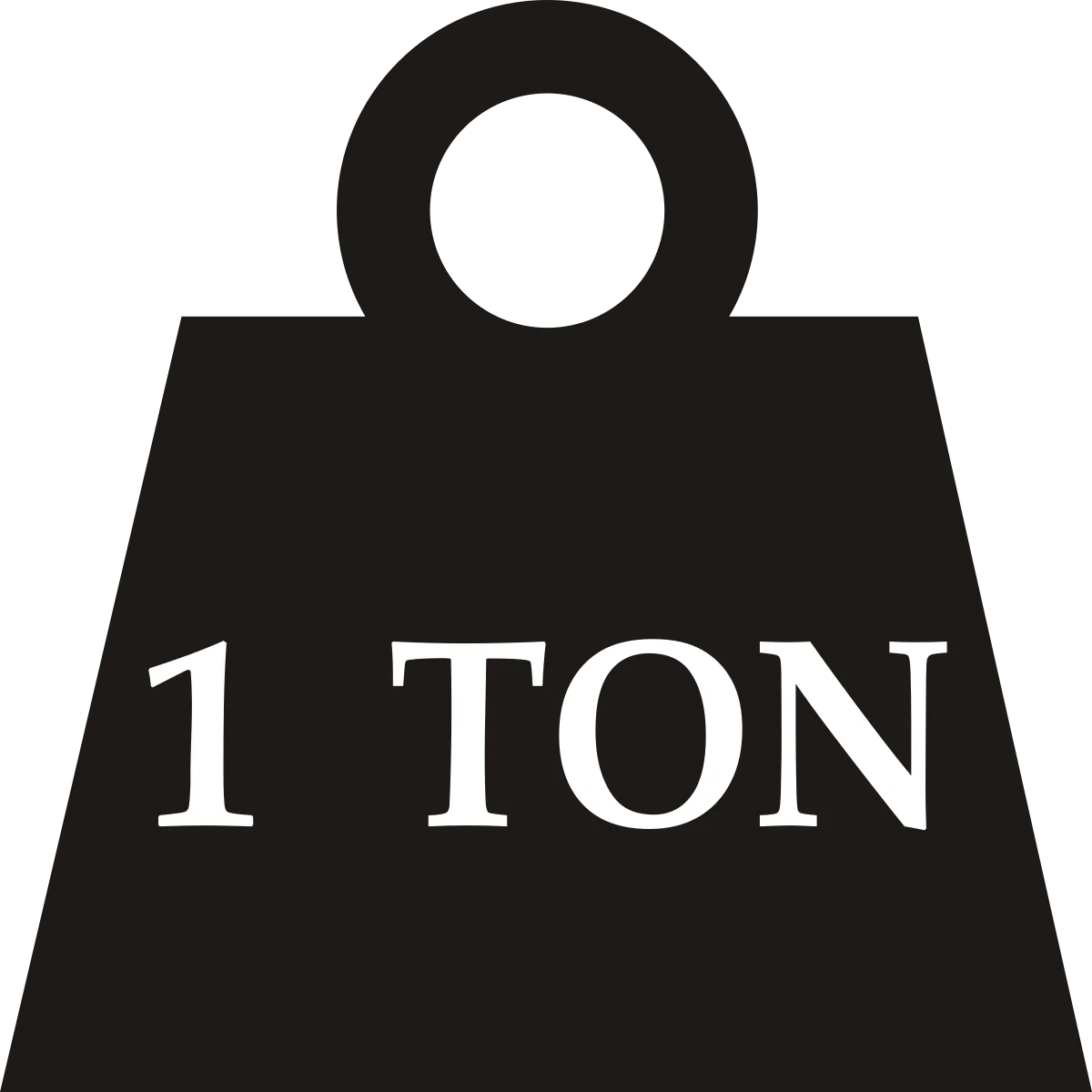Namaste! Aap sab ka swagat hai. Aaj hum baat karenge “1 tan kitna hota hai” ke bare mein. Yeh ek rochak vishay hai jahan hum vajan ki ek vyapak unit ke bare mein jankari prapt karenge. Chaliye shuru karte hain!
1 tan kitna hota hai
1 tan ek vajan ki ekai hai. Yeh ek bhaari unit hai jo kisi vastu ya cheez ke vajan ko darshata hai. 1 tan ka upyog bade-bade vyaparik tatha vyavasayik kendron mein kiya jata hai.
Conversion to Kilograms
To convert 1 tan to kilograms, we use a simple formula. One tan is equal to 1000 kilograms. This means that if you have 1 tan of weight, it is equivalent to 1000 kilograms. This conversion is widely used in various fields where the metric system is employed.
Let’s consider an example for better understanding. If you have a bag of rice weighing 1 tan, you can convert it to kilograms by multiplying 1 tan by 1000. So, 1 tan of rice is equal to 1000 kilograms. This conversion is essential when dealing with large quantities of goods or commodities.
Conversion to Pounds
If you are more familiar with the imperial system of measurement, you might be wondering how much 1 tan weighs in pounds. To convert 1 tan to pounds, we use another conversion factor. One tan is approximately equal to 2204.62 pounds.
Let’s illustrate this with an example. Suppose you have a shipment of goods weighing 1 tan. By multiplying 1 tan by 2204.62, you can determine that the weight in pounds is approximately 2204.62 pounds.
This conversion is particularly useful when dealing with international trade or when using the imperial system of measurement.
Usage in Agriculture
In the field of agriculture, accurate weight measurement plays a crucial role. Farmers often utilize the unit of 1 tan to measure crop yield and for trading purposes.
By weighing their harvest in tans, farmers can estimate the quantity of produce they have grown and negotiate fair prices in the market.
The weight of crops such as grains, fruits, and vegetables is often measured using 1 tan as a reference point.
Usage in Construction
The construction industry heavily relies on precise weight measurement for various purposes. From calculating the load-bearing capacity of structures to ensuring the right amount of building materials, accurate weight measurement is vital.
Builders and engineers use 1 tan as a unit of reference when determining the weight of construction materials such as cement, steel, and bricks. This helps them plan and execute projects with precision and safety.
Usage in Manufacturing
Weight measurement holds significant importance in manufacturing industries as well. Manufacturers rely on accurate weight measurements to ensure the quality and consistency of their products. 1 tan is often used as a reference point for measuring raw materials, components, and finished goods.
By maintaining precise weight standards, manufacturers can meet customer expectations, adhere to regulatory requirements, and ensure the reliability and safety of their products.
Importance of Accurate Measurement
Accurate weight measurement is of utmost importance across various industries. Whether it’s agriculture, construction, or manufacturing, precise weight data helps in making informed decisions and maintaining quality standards.
Inaccurate measurements can lead to financial losses, compromised product integrity, and safety hazards. By using reliable units like 1 tan, professionals can ensure consistency, efficiency, and trust in their operations.
Common Misconceptions
There are a few common misconceptions associated with 1 tan that need clarification. Some people mistakenly believe that 1 tan is equivalent to 1 ton. However, there is a significant difference between the two.
One ton is equal to 1000 kilograms or 2204.62 pounds, while 1 tan is equal to 1000 kilograms only. It’s important to understand the distinction to avoid any confusion when dealing with weight measurements.
Factors Affecting Weight
Several factors can influence the weight of an object. Temperature, humidity, atmospheric pressure, and elevation are some examples of external conditions that can affect weight measurements. It’s crucial to consider these factors and ensure proper calibration of weighing instruments for accurate results.
Additionally, factors such as packaging, moisture content, and density of the material being weighed can also impact the weight measurement.
Conclusion
In conclusion, 1 tan is a unit of weight measurement that holds significance in various industries. Whether it’s agriculture, construction, or manufacturing, accurate weight measurement plays a crucial role in decision-making, trade, and quality control.
By understanding the conversion factors, usage, and importance of precise weight measurements, professionals can ensure efficiency, reliability, and safety in their respective fields.
FAQs on 1 tan kitna hota hai
- How much is 1 tan in kilograms?
- 1 tan is equal to 1000 kilograms.
- Can 1 tan be used to measure human weight?
- No, 1 tan is not commonly used to measure human weight. It is more often used for measuring goods, crops, and materials.
- Is 1 tan the same as 1 ton?
- No, 1 tan is not the same as 1 ton. One ton is equal to 1000 kilograms or 2204.62 pounds, while 1 tan is equal to 1000 kilograms only.
- What is the origin of the term “tan”?
- The term “tan” originated from the Hindi language, where it represents a unit of weight.
- How does 1 tan compare to other weight measurements?
- 1 tan is equivalent to 1000 kilograms or approximately 2204.62 pounds. It serves as a reference point for weight measurements in various industries and contexts.

